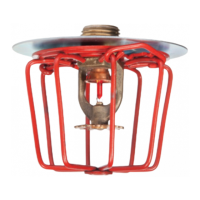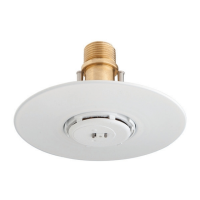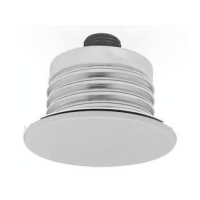Models BB, SD, HIP, and AP
Specific Application Sprinklers
For Protecting Attics
Page 1 of 28 AUGUST 2014 TFP610
IMPORTANT
Always refer to Technical Data
Sheet TFP700 for the “INSTALLER
WARNING” that provides cau-
tions with respect to handling
and installation of sprinkler sys-
tems and components. Improp-
er handling and installation can
permanently damage a sprin-
kler system or its components
and cause the sprinkler to fail
to operate in a fire situation or cause
it to operate prematurely.
General
Description
The TYCO Model BB (Back to Back),
SD (Single Directional), HIP, and AP
(Attic Plus) Specific Application Sprin-
klers for Protecting Attics are fire
sprinklers for combustible and non-
combustible sloped attic spaces. The
Model BB, SD, and HIP are Specific
Application Attic Sprinklers, whereas
the Model AP is a Specific Applica-
tion Combustible Concealed Space
Sprinkler having specific applica-
tion criteria for its use with the Mod-
els BB, SD, and HIP in attic spaces.
Specific Application Attic Sprinklers
provide superior fire protection in attic
spaces, and when compared to Stan-
dard Spray Sprinklers, cost savings
are achieved by eliminating branch-
line materials and the associated in-
stallation labor. The Specific Applica-
tion Sprinklers for Protecting Attics
have undergone the most extensive
fire testing ever performed for sloped
attic spaces. They are UL Listed with
their specific application guidelines for
use as special sprinklers as defined by
the National Fire Protection Associa-
tion (NFPA).
The Specific Application Attic Sprin-
klers provide an extended coverage
spacing alternative to the restricted
spacing of Standard Spray Sprinklers.
The restricted spacings of Standard
Spray Sprinklers used within attics is
described in the 2007 edition of NFPA
13, Table 8.6.2.2.1(a) and Section
8.6.4.1.4.
The Specific Application Attic Sprin-
klers are the first sprinklers to be:
• Listed for extended coverage in
combustible construction
• Full-scale fire tested in both wet and
dry system scenarios
• Full-scale tested for use in wood
truss construction
• Listed for specific roof slopes (Ref.
Table A)
The Specific Application Attic Sprin-
klers provide the best level of pro-
tection, and control cost by eliminat-
ing the need for additional sprinklers
and branchline piping. In many cas-
es, an attic can be entirely protected
with just one line of piping located be-
low the peak of the roof using Model
BB (Back to Back) Sprinklers. If there
is a need for Model SD (Single Direc-
tional) or Model HIP Sprinklers, one
line of either of these sprinkler types
is sufficient at each area being cov-
ered. For example and assuming the
use of Standard Spray Sprinklers, a
system in a 60 foot (18,3 m) wide attic,
with up to a 12:12 roof pitch, designed
to the 2007 edition of NFPA 13, would
require seven branchlines to cover the
main portion of the attic and several
additional branchlines to cover the hip
areas. With the Specific Application
Attic Sprinklers, the required coverage
can be obtained with just one branch-
line running below the peak and one
down each slope of the hip beam. This
would result in approximately 90%
less pipe needed for installation. This
reduction in the number of branch-
lines saves the cost of the pipe, fit-
tings, hangers, and associated labor
by eliminating up to five branchlines.
Another important aspect of the Spe-
cific Application Attic Sprinkler tech-
nology is the reduction in system
volume. This volume reduction may
result in reducing the size of a dry
pipe valve (and air compressor) and
possibly allow for quicker water deliv-
ery times, eliminating the need for an
accelerator.












